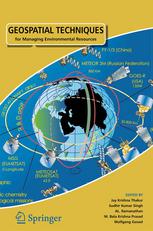

Most ebook files are in PDF format, so you can easily read them using various software such as Foxit Reader or directly on the Google Chrome browser.
Some ebook files are released by publishers in other formats such as .awz, .mobi, .epub, .fb2, etc. You may need to install specific software to read these formats on mobile/PC, such as Calibre.
Please read the tutorial at this link: https://ebookbell.com/faq
We offer FREE conversion to the popular formats you request; however, this may take some time. Therefore, right after payment, please email us, and we will try to provide the service as quickly as possible.
For some exceptional file formats or broken links (if any), please refrain from opening any disputes. Instead, email us first, and we will try to assist within a maximum of 6 hours.
EbookBell Team

4.7
46 reviews"Geospatial Information" is spatial data concerning a place or, in space, collected in real time. Geospatial techniques together with remote sensing, geographic information science, Global Positioning System (GPS), cartography, geovisualization, and spatial statistics are being used to capture, store, manipulate and analyze to understand complex situations to solve mysteries of the universe. These techniques have been applied in various fields such as meteorology, forestry, environmental management, agriculture, health, homeland security etc. around the globe. This volume presents case studies and examples from various parts of the world and provides a broad overview of various approaches; data sets; data acquiring, monitoring and dissemination methods; satellites and sensors; tools and techniques used; integrating tools, techniques and application to various fields for the sustainable management of environmental resources in the context of global environmental change and natural hazards. The objective of this book is to provide state-of-the-art information to academics, researchers and industry practitioners who are involved or interested in the study, use, design and development of advanced and emerging geospatial technologies around the world with ultimate aim to empower individuals and organizations in building competencies for exploiting the opportunities of the knowledge society. All the chapters are peer-reviewes and evaluated and are an inter- and multi-disciplinary source of information, making an effort to link various geospatial techniques to make the earth an habitable place. The contributors have tried to focus their respective views on the current problems that need urgent attention. Consequently, we see this book as a comprehensive information base, which includes work of expertise in their specific fields of research.